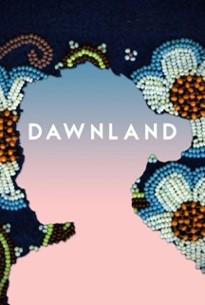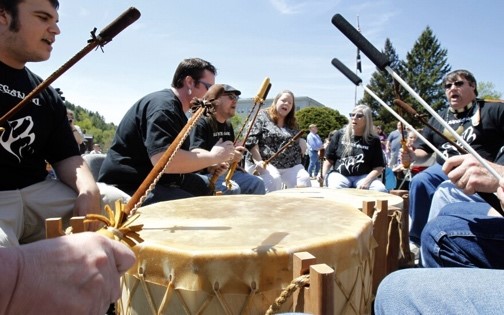Diversity, Equity, Inclusion, and Belonging Articles
September 2024 Diversity, Equity, Inclusion, and Belonging Article
Read the most recent DEIB column by Simrun Bal MD, Exploring Indigenous History in Vermont
ACP Vermont DEIB Corner: Exploring Indigenous History in Vermont
By Simrun Bal, MD
Dr. Bal lives in Burlington, VT, where she practices outpatient internal medicine at the Burlington VT Veterans' Affairs Clinic (affiliated with the White River Junction VA Medical Center).
For the summer ACP newsletter's DEIB (Diversity, Equity, Inclusion, and Belonging) Corner, we'll explore a brief overview of the Abenaki people, the Indigenous peoples of what is now called Vermont.
As a brief background, the Wabanaki Confederacy is made up of five Indigenous nations: Abenaki, Malecite, Micmac, Passamaquoddy, and Penobscot. The term “Wabanaki” refers to “People of the Dawnland,” as “Waban” refers to “light or dawn” and “Aki” refers to “land.” (1) The population of the Wabanaki Confederacy is still active and present on its ancestral territory, and comprises about 3,000 people.(2) Vermont is part of the homelands of the Abenaki and is known as N'dakinna.

In Vermont, there are four state-recognized Western Abenaki tribes:
- The Elnu Abenaki Tribe – traditional territory in southern Vermont
- The Koasek Traditional Band of the Koas Abenaki Nation – traditional territory in central and northwestern New Hampshire and northestern and central Vermont
- The Nulhegan Band of the Coosuk Abenaki Nation – traditional territory in the Upper Connecticut Basins of Vermont, northern New Hampshire, and the eastern townships of Quebec
- The St. Francis-Sokoki Band of the Abenaki Nation of Missisquoi – traditional territory in northwestern Vermont
In the early 1600s, about ten thousand Abenaki lived in Vermont and grew crops, built villages, and farmed the river floodplains of Vermont, with archeological evidence that this occurred as far back as 1100 A.D. The Abenaki traditional cultures tend to be egalitarian and kinship-based.
In 2011 and 2012, the above tribes received recognition from the state of Vermont.
To achieve health equity, it is crucial to understand the histories of particular communities – and in Vermont, it's important for us to continue to learn from and about the history of the Wabanaki. The Vermont Department of Health outlines relatively recent health statistics that one can explore and notably has a Community Lens piece written by Chief Joanne Crawford, of the Abenaki Nation of Missisquoi. She describes the struggles with historical and intergenerational trauma that exacerbate the current mental health and social challenges that many in this population are facing. She also writes eloquently of ways we can help:
“How do we help? Include Indigenous people in the data, work with the tribes to find culturally appropriate programs that work for their community, provide equitable support, services and funding, and include them in your advisory panels, councils, and boards. It is important for agencies and organizations to engage with Indigenous communities with transparency and recognition of the expertise of their lived experiences in order to sustain authentic working relationships.” – Chief Joanne Crawford, Abenaki Nation of Missisquoi, Excerpt from Vermont Dept of Health
One excellent example of a community-driven health initiative is by the Vermont Abenaki Artists Associations (VAAA). (3) The VAAA began a program called Waolôwzi, referring to the Abenaki phrase “be very well” and “continue to live very well.” It was originally built for the COVID-19 pandemic but has expanded to seek to improve the health of the community. They have conducted health clinic and eye exams at the annual Abenaki Heritage Weekend (June 2024), provided over 780 COVID-19 testing kits to the Native American community, provided PPE to Abenaki artists, Elders, and community members, and more. Another example is that of the Abenaki Nation of Missisquoi, which holds educational programs related to diabetes and hypertension, as well as monthly vaccine and health clinics. (4)

Resources to learn more about Abenaki culture and heritage include:
- Alnôbaiwi– a nonprofit focused on the preservation of Abenaki culture and heritage,
- What is the Status of the Abenaki Native Americans in Vermont Today? – an excellent radio show by Brave Little State (2016)
- Abenaki Arts and Education Center
- Abenaki Alliance
Image sources:
Footnotes:
April 2024 Diversity, Equity, Inclusion, and Belonging Article
ACP Vermont DEIB Corner: What are Subtle Acts of Exclusion (Microaggressions) and Why Do They Matter?
By Simrun Bal, MD
Dr. Bal lives in Burlington, VT, where she practices internal medicine at the Burlington VT Veterans' Affairs Clinic (affiliated with the White River Junction VA Medical Center).
For the spring newsletter's DEIB (Diversity, Equity, Inclusion, and Belonging) Corner, we will be discussing subtle acts of exclusion and ways to respond.
- What is a subtle act of exclusion? These acts (also known as microaggressions) are brief and commonplace daily verbal, behavioral, or environmental indignities, whether intentional or unintentional, that communicate hostile, derogatory, or negative slights and insults towards marginalized groups (Pierce, 1974). The term "microaggressions" was termed in the 1970s by Dr. Chester Pierce, an African-American psychiatrist, to describe the harm that was caused by these slights to non-dominant groups.
- Examples include:
Indirect Strategies
Redirect: Change the subject or shift attention away from the target.
Uplift: Affirm and uplift the target. Example: You are partnered with a great resident physician and are fortunate that he is taking care of you.
Direct Strategies
Reflect Back: Reflect the microaggressor's statement back to them and explore their intentions.
Example: I heard you say X; can you explain what you mean by that?
Communicate Impact: Describe the impact that you feel.
Example: When you use words like X, it makes me feel uncomfortable.
Raise Awareness: Educate the microaggressor using a fact-based narrative.
Example: I believe a more inclusive term is X.
Check-In (with the person who committed a microaggression):
Example: I've been reflecting on the conversation we had. Can we find some time to check in?
Reaffirm Boundaries:
Example: We do not tolerate that type of language here, and I ask that you speak to our team members with respect, please.
December 2023 Diversity, Equity, Inclusion, and Belonging Article

ACP Vermont DEIB Corner
By Simrun Bal, MD
Dr. Bal recently moved from New Hampshire to Vermont and lives in Burlington, VT, where she practices internal medicine at the Burlington VT Veterans’ Affairs Clinic (affiliated with the White River Junction VA Medical Center).
As part of the Governor’s Newsletter, we seek to raise awareness in our chapter of diversity, equity, inclusion, and belonging (DEIB) issues among Vermonters.
During this fall’s newsletter, we will specifically be providing information about supporting LGBTQIA+ patients, colleagues, and community members. You might be wondering:
- The Basics: What does LGBTQIA+ stand for? The established “LGBTQ” abbreviation now has more letters that represent acceptance and greater inclusion related to sexual orientation and gender identity. L – lesbian, G – gay, B – bisexual, T – transgender, Q – queer or questioning, I – intersex, A – asexual, and + denotes everything on the gender/sexuality spectrum that letters and words are not able to describe. It is important to note that an individual’s definition of their gender and/or sexuality may not match what we have detailed here; it is important to respect people’s desired self-identifications. Try to match the language that people use to describe themselves. Please see below for this newsletter’s Practical Pearl about pronoun use.
- What is Vermont’s status as it relates to providing inclusion for members of the LGBTQIA+ community? Vermont is one of the five top states for protections extended to members of the LGBTQIA+ communities (LGBTQIA Alliance of Vermont). According to the Movement Advancement Project, an organization that tracks over 50 different LGBTQ-related laws and policies: in Vermont, about 5.2% of adults (18+) identify as LGBTQ (Gallups/William 2019), with about 23% of LGBTQ adults raising children. The Movement Advancement Project rates Vermont as a “high” tally state indicating that the laws and policies that shape LGBTQIA+ people’s lives, experiences, and equality, tend to be supportive when compared to other states. It is important to note, though, that a “high tally” score reflects only existing laws, not bills under consideration, the implementation of law’s, or social climate within a state Movement Advancement Project.
- What can you do as an internal medicine physician and advocate in the state of Vermont? It is important to educate oneself about LGBTQIA+ rights and resources in one’s community (see below), as well as understanding what may be happening on a national level. Last year, several anti-LGBTQIA+ bills were introduced across numerous states. As a physician, you can provide written testimony for or against a bill, write an op-ed, and practice greater inclusivity in caring for patients and others. You can also make sure to reflect upon your own values and beliefs, learn about LGTBQIA+ issues using community resources (see below), and practice inclusivity in your workplace.
- What are some community resources for LGBTQIA+ community members in Vermont? The Pride Center of Vermont holds several groups for those who are LGTBQIA+, including Glam Vermont (for gay, bi, ,trans, queer+ male identified individuals; also offers stigma-free HIV and STD education and outreach events), Thrive QTPOC (a space for Queer & Trans People of Color in Vermont), Momentum (for 40+ LGBTQ Vermonters), and the LGBTQ People with Disabilities Network.Health screenings are also offered by the Pride Center of Vermont, such as rapid HIV testing and cancer screenings (such as mammography). Patients can also identify affirming physicians as part of the Vermont Diversity Health Project and as a physician, you can also sign up to be part of this directory.There are also a variety of events this fall, including a Trans Love Tuesday Walk in Burlington on 11/14 (See Pride Center VT Events), a Pride Book Club in Winooski on 11/15, and a Film Screening and Discussion for World AIDS Day on Dec 1 in Montpelier. See an events calendar here for specifics and other activities around Vermont.
- Practical Pearl: How does one practice gender-inclusive language? One way to practice gender-inclusive language is to carefully consider the pronouns you use for others. You can’t always know what someone’s pronouns are by looking at them. Asking and correctly using someone’s pronouns is a basic way to show respect for their gender identity. One way to ask is “What pronouns do you use?” It is not offensive to ask, and allows for better communication. You can also model sharing your pronouns when you meet someone new by saying, “Hi, my name is [Name] and I use she/her pronouns. How about you?” You have thus signaled that you’re aware that people may use pronouns that you wouldn’t assume for them and that you are a safe person to disclose your pronouns to. If you make a mistake, the best thing to do is correct yourself in the moment or apologize right away.


